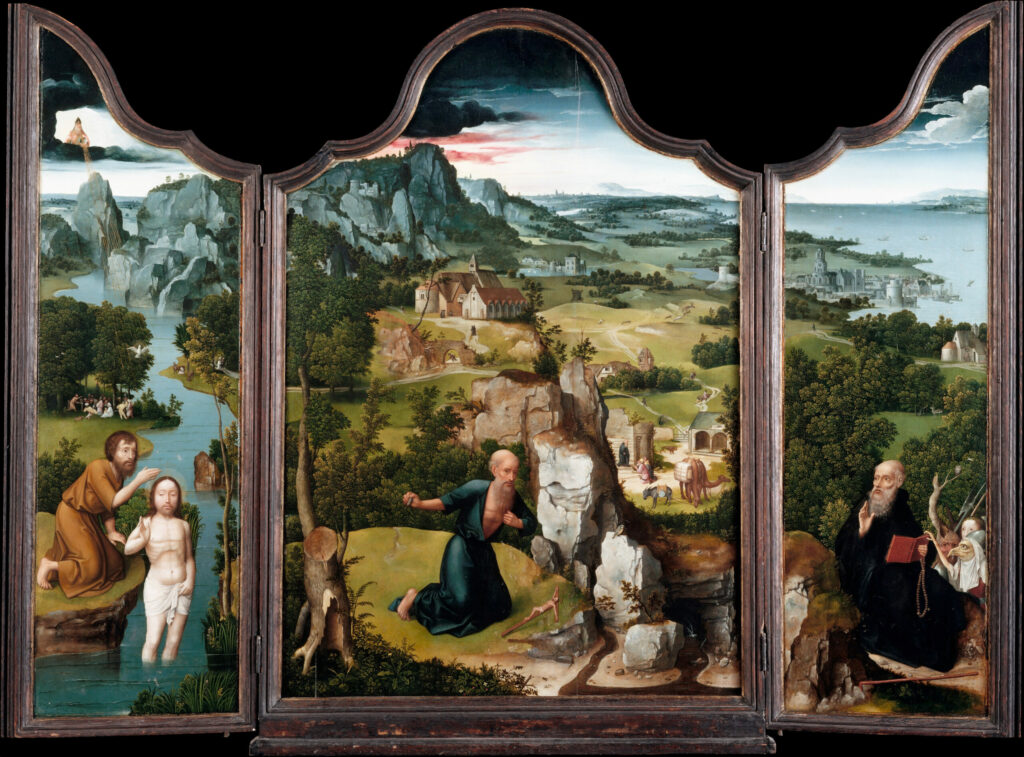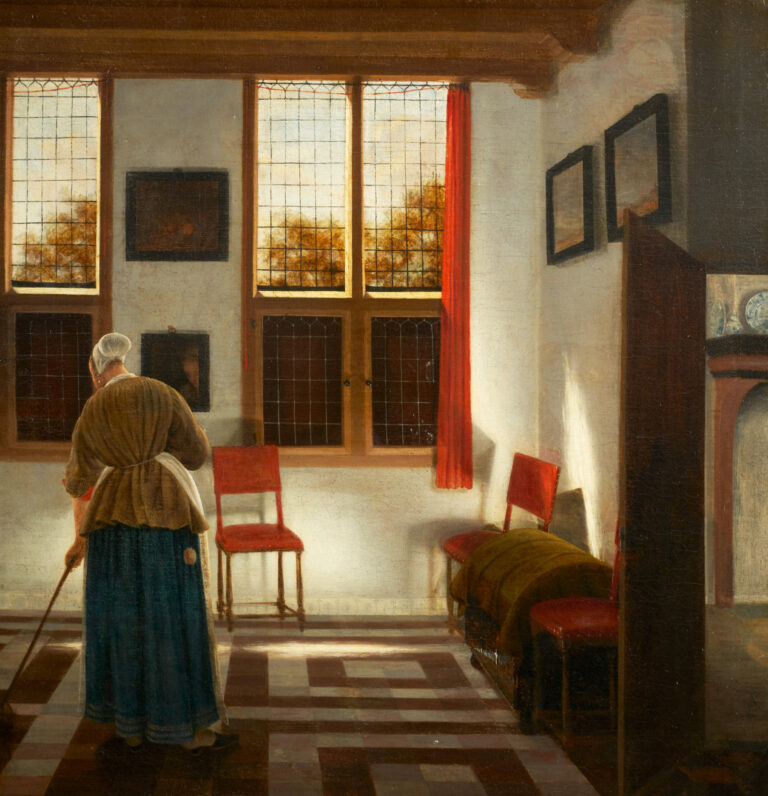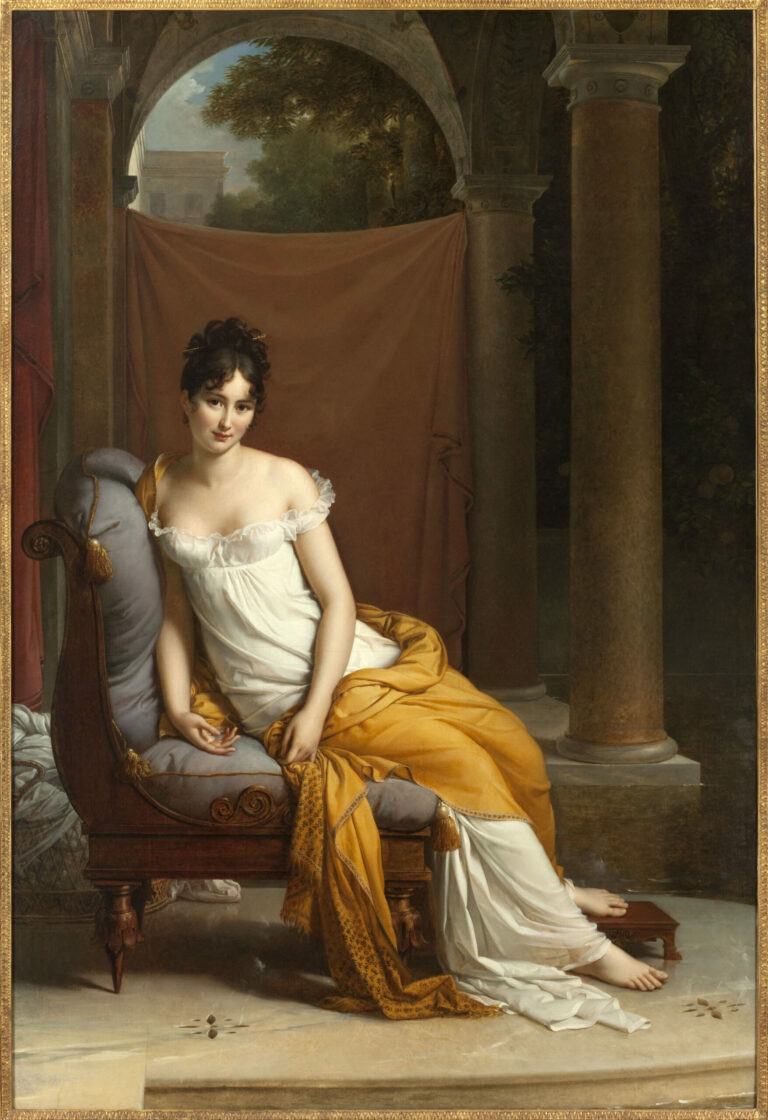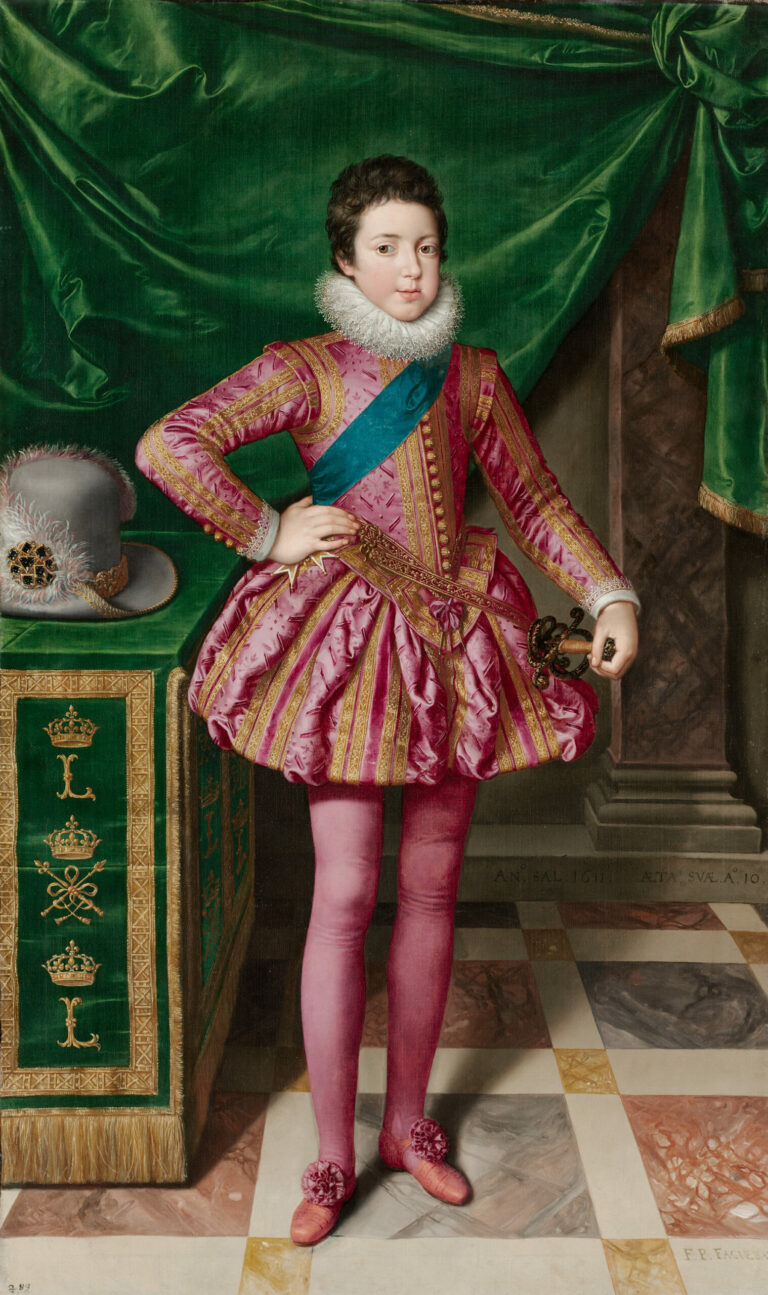
A masterpiece of the Renaissance, this triptych immerses us in a universe where the divine and nature intertwine with extraordinary finesse. Patinir displays his virtuosity in landscape art, creating a true “spiritual world map” where sacred scenes unfold within vast natural expanses.
The three panels offer a contemplative journey: on the left, Christ’s baptism in the crystalline waters of the Jordan; in the center, Saint Jerome in penitence before a cave; on the right, Saint Anthony tormented by fantastic creatures. Patinir’s characteristic palette, with its deep blues and emerald greens, gives the work a striking cosmic dimension. The artist revolutionizes traditional hierarchy by miniaturizing the holy figures in favor of a vertiginous panoramic landscape that invites the viewer on a meditative pilgrimage.
Further Information
- The Penitence of Saint Jerome by Joachim Patinir, c. 1518
- Central panel: 46 1/4 x 32 in. (117.5 x 81.3 cm); each wing, 47 1/2 x 14 in. (120.7 x 35.6 cm)
- The Metropolitan Museum of Art, Fifth Avenue, New York, exhibited in Gallery 613
- https://www.metmuseum.org/art/collection/search/437261
Joachim Patinir (c.1480-1524), considered the first specialist landscape painter in Western art, marks with this work the pinnacle of his artistry. Born in Dinant in present-day Belgium, this Antwerp artist was admired by Dürer himself. A radical innovator,
Patinir elevated landscape to the status of a subject in its own right, rather than mere backdrop, thus inaugurating a pictorial genre destined for a brilliant future. His meticulous technique, inherited from the Flemish Primitives, combines with a cosmic and spiritual vision that makes each natural element a reflection of divine harmony. His “world landscapes” with infinite horizons, punctuated by symbolic details, profoundly influenced the evolution of Flemish and European painting.






